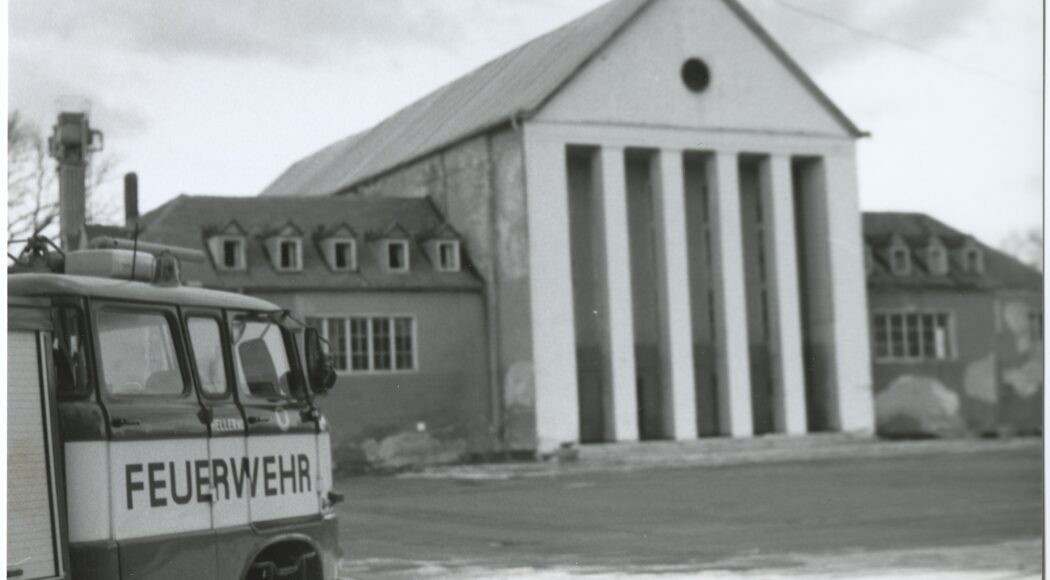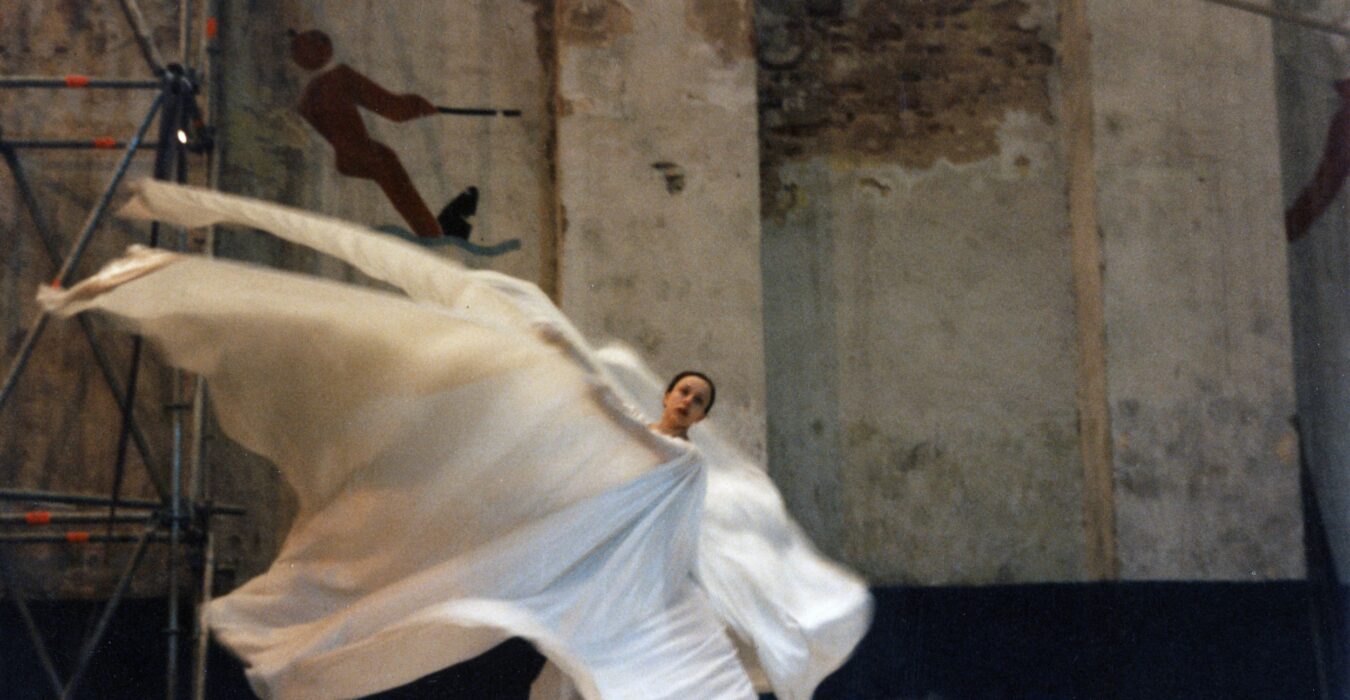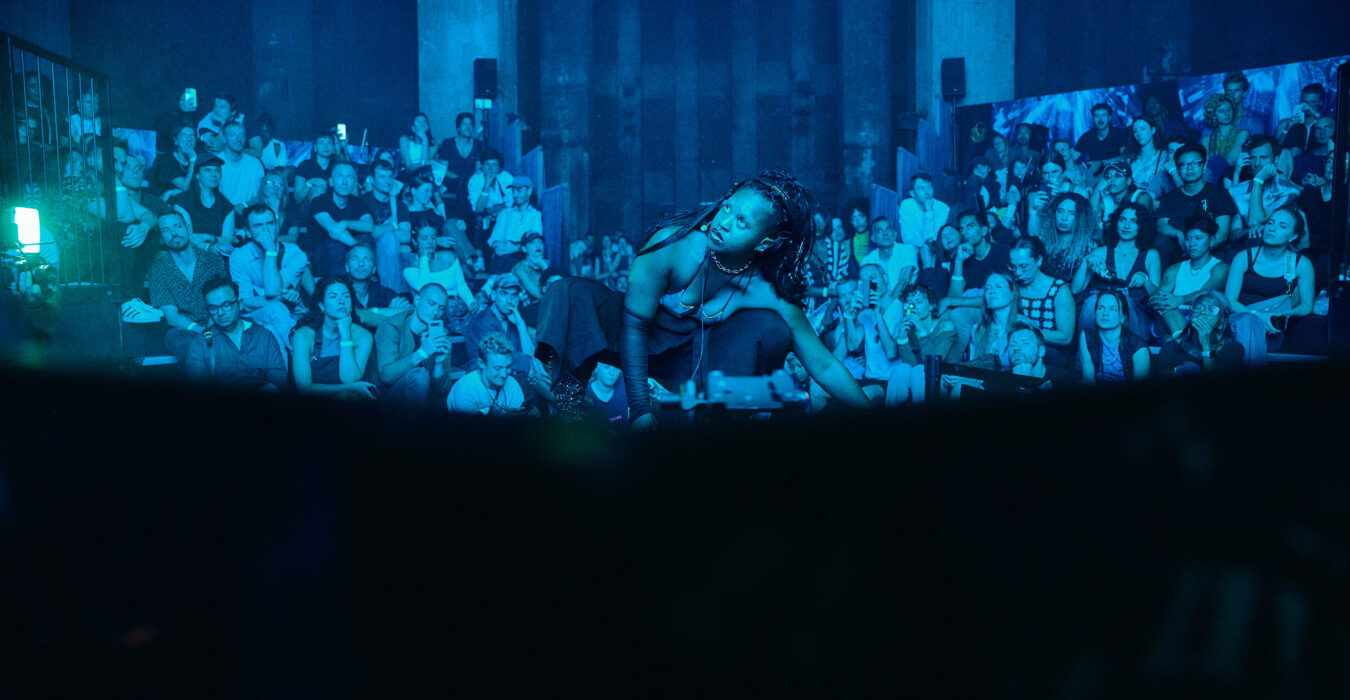Vernissage: ZOOM 90-06 – Wanda:Wandtke:Wehrli:Ludwig
Barbara Lubich, Svea Duwe
04.09. – 06.12.2025
It is a true success story that an interdisciplinary, culture-oriented group succeeded in developing the Festspielhaus HELLERAU – after a long period of external military use as a National Socialist police school and subsequently as a Soviet barracks and sports hall – back into a place of art production and securing it for interdisciplinary art and social dialog for the long term.With the exhibition ZOOM 90-06, Svea Duwe & Barbara Lubich bring the period from ’89 back into focus and take a closer look at works by Claudia WANDA Reichardt, Hanne Wandtke, Penelope Wehrli and Carsten Ludwig, which were conceived in direct interaction with the specific location of the Festspielhaus HELLERAU.
In the combination of room and video installations, Duwe & Lubich focus on a time of upheaval in which the eventful history of the Festspielhaus is inscribed, which also reflects the history of Germany as a whole after 1911.
The exhibition is open on all event days from one hour before the first event.
Part 1 UMBRUCH Audio-visual and spatial installation (Foyer)
The Festspielhaus as a monument in a state of decay: Part 1 recalls the early 1990s and lets five people come to word on the “how” of a new beginning.
With: Detlev Schneider, Carsten Ludwig, Michael Faßhauer, Kai Kaden, Hans-Joachim Meyer, Fabian Zimmermann.
Part 2 FIRE & FLAME Audio-video and spatial installation (Ecksalon West)
It was Wanda (Claudia Reichardt) who made the zeitgeist resonate in her associative curatorial practice and created the 1996 art festival with invited artists. Penelope Wehrli developed the “Herzstrahl” and Hanne Wandtke the “Feuerwehrballett”. The artists involved and journalist Gabriele Gorgas have their say.
Part 3 CARSTEN LUDWIG (Salon West)
Like few others, theater director Carsten Ludwig wove the layers of the Festspielhaus Hellerau’s past into poetically provocative productions that took over the entire Festspielhaus grounds. They were called “The Snake”, “The Obelisk”, “A Month in Dachau” and “Schubert Echo”. Amateurs and professionals performed in choral formations, singing, cooking or reciting. All scenic means were used. The film portrait traces Carsten Ludwig’s work, which began in the GDR era and culminated in the 1990s.






